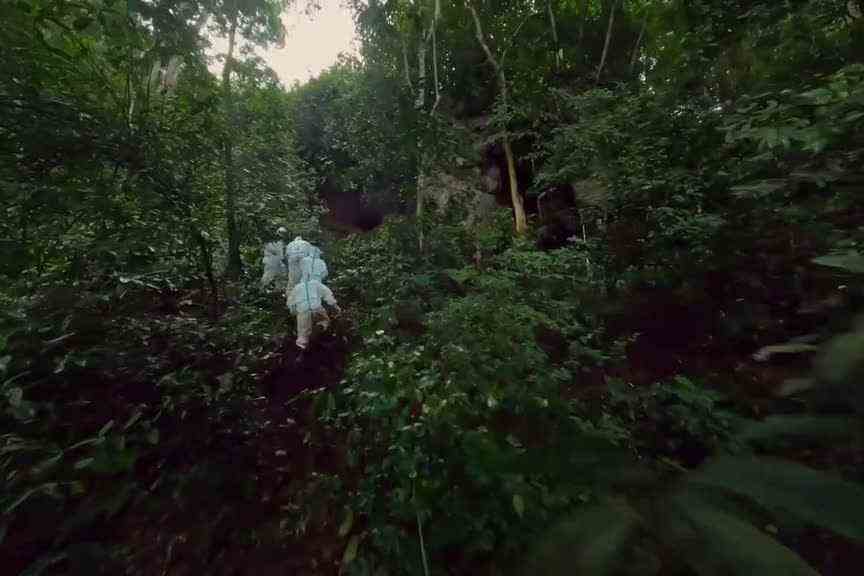La COP15, conférence de l’ONU sur la biodiversité, s’ouvre mercredi à Montréal, alors qu’une espèce sur cinq est menacée d’extinction au pays, selon un récent rapport fédéral. Le documentaire La fabrique des pandémies, présenté lundi sur ICI Explora, explique comment la destruction des écosystèmes crée des conditions favorables à de nouvelles épidémies.
La pandémie semble tirer à sa fin, mais le combat contre les maladies infectieuses « émergentes » ne fait peut-être que commencer. Au cours des cinq dernières décennies, de nombreuses épidémies ont été provoquées par des virus passés des animaux aux êtres humains comme le VIH, le SRAS, Ebola et la COVID-19. « Certaines de ces épidémies sont restées confinées à l’Asie ou à l’Afrique, alors on a tendance à les oublier dans les pays occidentaux », observe Marie-Monique Robin, réalisatrice de La fabrique des pandémies.
Son documentaire, qui fait suite à un livre du même titre publié en 2021 avec l’écologue et biologiste Serge Morand, remonte aux sources de ces épidémies et leur trouve un dénominateur commun : la destruction des écosystèmes par l’activité humaine. La déforestation joue en effet un rôle crucial, selon les nombreux scientifiques qu’elle a rencontrés.
« Ce qui m’a frappée, c’est qu’ils étaient tous inquiets », raconte la réalisatrice jointe à Paris.
[Les scientifiques] told me they’ve been warning for decades that if we destroy ecosystems, we’re going to enter an era of epidemics and pandemics — some think we already have.
Marie-Monique Robin, director of The factory of pandemics
With actress Juliette Binoche, who conducts the interviews and narrates the documentary, Marie-Monique Robin (The world according to Monsanto, Roundup facing its judgesetc.) traveled to the Amazon, Africa and Asia to meet “virus hunters” ecologists who are trying to understand how these pathogens present in natural environments or animals end up passing to human beings.
“It is from the destruction of ecosystems, particularly in tropical forests where there are many potentially dangerous pathogens for human beings, that most emerging infectious diseases start”, summarizes the director.
A well-known scenario
The same scenario repeats itself in different corners of the world: a natural “reservoir” animal of a virus (often a bat, a primate or a rodent) proliferates or moves into areas closer to humans. Contamination then occurs through direct contact with the animal (hunting, butchering, eating) or through another animal or an insect that “bridges”.

PHOTO PIERROT MEN, SUPPLIED BY THE PRODUCTION
Director Marie-Monique Robin, on the left, filming in Madagascar with Juliette Binoche, who narrates and carries the documentary The factory of pandemics
The Nipah virus arrived in Malaysia by bats driven out of Borneo by the felling of trees to make way for palm oil cultivation. The virus, present in their droppings, has notably contaminated pigs reared under mango trees, then breeders. In North America, forest fragmentation favors the proliferation of white-footed mice, a natural reservoir of Lyme disease, which then infect ticks that bite humans.
“It’s not the white-footed mouse that’s the problem,” says the director. It eats small caterpillars that affect crops. The problem is that cutting down trees drives out the white-footed mouse’s natural predators like foxes, which used to regulate populations and help limit the spread of the bacteria that causes Lyme disease in ticks.
Human interventions — such as monocultures — favor certain species which, as a result, become invasive and dangerous.
Marie-Monique Robin, director of The factory of pandemics
The findings of scientists lead to another dizzying observation: it is an entire economic system based on constant growth in a world with limited resources that is called into question. “We must stop destroying, summarizes the director, evoking a sixth mass extinction. It’s huge and it’s impressive to see how much we didn’t hit. […] How can we imagine that it will continue to collapse and that we will not be impacted? »
The factory of pandemics defends the same idea as the documentary Disrupted climate, health in danger, broadcast on Télé-Québec this fall: taking care of the planet also means taking care of human health. The scale of the challenges to be overcome does not scare Marie-Monique Robin, who finds that scientists are “restoring coherence” in a “huge general mess in which we could drown”.
The other strength of her documentary is to show the beauty of nature and the wonder it arouses through the eyes and emotions of Juliette Binoche. “His presence allowed me to walk on two legs: the scientific one and the emotional one,” says the director. Her emotion is the link to beauty. »
On ICI Explora, this Monday, at 9 p.m.
